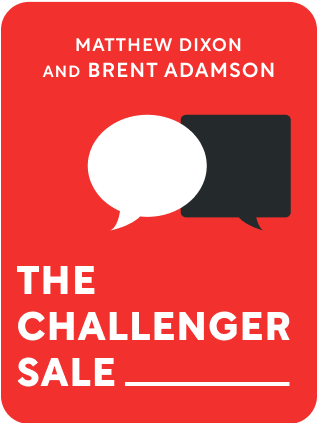

This article is an excerpt from the Shortform summary of "The Challenger Sale" by Matthew Dixon and Brent Adamson. Shortform has the world's best summaries of books you should be reading.
Like this article? Sign up for a free trial here .
What does it mean to sell solutions, not products? How can you learn to use this sales strategy?
Sell solutions, not products is a sales strategy that relies on complex sales that aim to solve customers’ problems. As the idea of sell solutions, not products became the new selling norm, one type of sales rep was found to be very successful: the Challenger Seller. Learn more about solution sales below and why Challengers Sellers are so successful.
Sell Solutions, Not Products
Over the last several decades, more suppliers have begun selling complex “solutions,” or bundles of products and services, rather than just simple products. But they’ve stuck to traditional sales techniques, not realizing that winning a different kind of deal requires a different approach. This idea to sell solutions, not products works best with new and innovative techniques, like The Challenger Sale model.
The standout reps who succeeded during the recession and thereafter excelled at “solution selling” because they naturally brought a different set of skills and behaviors to bear. To explain the importance of these skills, it’s necessary to first review the evolution of the sales model.
The Rise of Solution Selling
In the past, traditional selling focused on transactional sales of individual products like hammers based on price and quantity. In contrast the idea to sell solutions, not products focuses on offering “bundles” of products and services.
Suppliers came up with solution selling as a way of differentiating themselves from the competition. Small differences in a company’s product versus a competitor’s product had become harder to sell—customers viewed products from different companies as essentially the same and so chose the ones with the lowest price.
However, bundled offerings are customized and difficult for competitors to duplicate. Bundling also saves suppliers money and gives them a way to justify premium pricing. Because of these benefits, solution selling has become the dominant sales strategy in virtually every industry.
However, this more complex sales model has placed additional burdens on both the customer and sales rep to think and act differently, which has affected how the model has evolved.
Customer Response to Sell Solutions, Not Products
Solution selling has changed customer expectations and behavior.
When reps claim to be selling a solution, customers expect them to solve problems, not just fulfill a purchase order for a product like a hammer. This has resulted in a protracted sales process, taking up more of the customer’s time and involving more people and levels of approval in the customer organization.
The rep needs to develop an understanding of the customer’s issues and challenges, identify a better way to address them, explain the benefits of the proposed solution, and identify the metrics for measuring success.
To understand the customer’s issues, reps spend a lot of time asking questions like, “What’s keeping you up at night?” The back-and-forth questions and answers, presentations, proposals, and amendments take time. Also, developing solutions requires interacting with more people in the customer organization.
With multiple suppliers adopting the same approach, solutions selling has led to “solutions fatigue” on the part of the customer. In response to the increased complexity, customer buying behavior has changed in four ways:
1) Customers require consensus within their organization on the sale.
When deals are complicated and the payoff uncertain, corporate decision-makers, even at the senior level, aren’t comfortable agreeing to an expensive deal unless they know their teams support it. The sales rep has to spend time chasing approvals to build broad consensus in the company.
2) Customers are increasingly risk averse.
Customers are requiring that suppliers share more in the risk that their solutions won’t deliver the promised results—for instance, by changing the way they measure results. Some customers are measuring supplier success by the performance of the customer’s business, rather than of the supplier’s products. Consequently, suppliers need to build risk into their offers.
3) Customers want greater customization.
As complexity increases, more customers are asking for modifications to address their specific needs. To suppliers, customization is an expense, while to customers, it’s a logical part of the solutions sale and shouldn’t be an added cost. They think, “For the solution to solve my problem, it has to do certain things. If it doesn’t do them, it’s not a solution.” Everyone wants customization but no one wants to pay for it.
4) More customers are using third-party consultants.
In recent years, more customers have turned to third-party consultants to help them get the most value from the purchasing decisions. For example, starting in 2009, under increased pressure to cut costs, companies began hiring consultants to help them save money on employee health insurance coverage. Consultants may be aggressive middlemen looking for ways to squeeze suppliers on price and reopen past deals for renegotiation, or they may be simply trying to help customers navigate complexity. Either way, suppliers may end up with a customer’s business, but little of his money.
These four trends mean that while the economy has improved, selling hasn’t gotten easier.
A Performance Gap
These trends have made the strategy of sell solutions, not products difficult for the average rep, and thus have significantly affected individual rep performance. A study comparing the impact of transactional selling versus solution selling on the performance of sales reps found:
- In transactional selling, the performance gap between average and top performers is 59%, meaning a top performer sells about one-and-a-half times as much as the average, or core, performer.
- In solution selling, the gap is almost four times greater—star performers outperform average or core performers by almost 200%
As sales complexity increases, the gap between average and standout performers grows significantly. So, how can the sell solutions, not products strategy work for everyone?
This leads to three conclusions:
1) Organizations selling solutions must validate their stars—these reps are carrying the ball for the company. In fact, a side effect of solution selling has been the increased dependency of many companies on a few key people.
2) As sales complexity increases, the value to companies of narrowing the performance gap by increasing the performance of core reps increases significantly. In transactional selling, you get a 30% improvement by moving a rep halfway from average to excellent; in a solutions environment, you get 100% improvement.
3) Closing the performance gap pays off more than it used to; by the same token, not closing it costs more. Without help in navigating a world of more demanding, risk-averse customers, average reps will keep falling behind until they can’t execute solution selling at all.
However, CEB researchers have identified the unique skills and behaviors developed and practiced by standout performers, and they’ve created a template all sales organizations and reps can follow.
Sell solutions, not products is a strategy that works—but not all sales reps have the natural skills for this complex system. Using the Challenger Sale Model, sales reps can learn the skills to succeed at solutions sales.

———End of Preview———
Like what you just read? Read the rest of the world's best summary of Matthew Dixon and Brent Adamson's "The Challenger Sale" at Shortform .
Here's what you'll find in our full The Challenger Sale summary :
- Why the best salespeople take control of the sale and challenge the customer's thinking
- How to package your company with a key insight to spark an "a-ha" moment
- How to get the organizational support you need to maintain your sales edge






